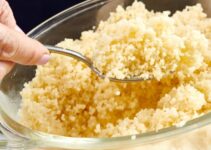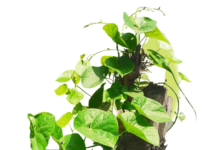Toothache tree introduction
The toothache tree is known for its peculiar sharp attributes and is used in many herbal medicines. The bark skin of this tree is intense, like chilly. All plant parts, especially the fruit, bark, and roots, are used for medicinal purposes. It is used to treat many diseases and disorders. It is effective in the case of rheumatism, spasmodic, diuretic, irritant, odontalgic, stimulant, etc.
Toothache tree description

Image source: Pixabay.com
A toothache tree is a medium-sized tree with 5-6 meters in height. Spines are abundant in bark and branches. The leaves are long lanceolate with serrated margins. The flowers are tiny; the fruit is oval and shining and covered with small oil glands. One of the essential features of this plant is that every part has a characteristic fragrance. The trees are generally found in the Himalaya region, Southeastern USA,
10 Benefits of Toothache Tree
- Tooth pain: One of the best Ayurvedic medicinal plants for tooth pain treatment. , the chewing of the fruit helps to reduce dental pains. The decoction of the fruit gives relief to toothache after gargling. Its fruit powder is beneficial for cleansing the teeth. Massage of gums with powder of its fruit arrests bleeding and reduces infection in pyorrhea.
- Abdominal pain: Take an equal mixture of the powders of toothache fruit, rock salt, roasted asafetida, vidanga (Embelia ribes), and celery seeds. Now, add about half of the mixture to the powdered roots of Nishottara (Operculina terpethum). Could you take it with lukewarm warm water? It is effective in abdominal pain, flatulence, swellings, and indigestion.
- Dyspepsia: Mixing fruit powder with jaggery and ghee is recommended for dyspepsia. It also works well to alleviate indigestion.
- Liver diseases: Due to improper lifestyle, the liver becomes associated with diseases and problems. The use of this plant acts as a stimulant to the liver. It is also known as a digestant and appetiser. It works against worm infestation.
- Dysuria (Painful urination): A large number of people are suffering from a burning sensation after urination. The use of Tejohva helps in the treatment of genitourinary disorders. Simultaneously, it also acts as a diuretic.
- Blocked phlegm: The proper use of it helps to relieve blocked phlegm in bronchitis and asthma.
- Antiseptic powder: The powder of its fruit is used for dusting on the wounds and acts as an antiseptic.
- Headache: The paste of its bark skin alleviates the heaviness of the head due to vitiated Kapha and reduces headaches.
- Sore throat: The chewing of the fruit and gargling its decoction reduces sore throat and refreshes the mouth. The decoction of its fruit is also effective for stomatitis.
- Heart and kidney: Its tea can be taken on the excellent health of the kidneys and heart.
Medicinal uses of toothache tree
- It contains xanthoxylin oil that has several medicinal applications.
- The fruit is a tonic and is good for the stomach and digestive organs.
- Toothache fruits are used as antispasmodic, carminative, and antirheumatic.
- Its inner bark makes tea, which helps treat itchy skin.
- Taste: Pungent
- Post digestive effect: Pungent
- Potency: Hot
- Attributes: Light, dry, and sharp
- Doshas: Alleviate Kapha and Vata
- Actions: Relieves dental pains, appetiser, digestant, deflatulent, etc.
Parts Used
- Fruit
- Bark skin
- Root
Different names of toothache tree
- English: Toothache tree
- Hindi: Tejabala
- Latin: Zanthoxylum clava-Hercules
- Marathi: Triphala
- It is also known as Tejohva, Tejaswini, Tejovati, etc.




